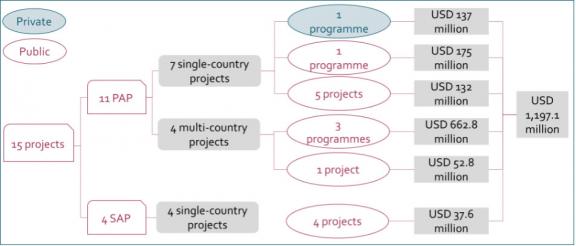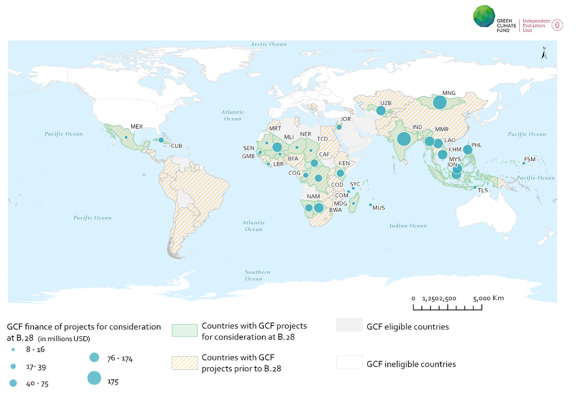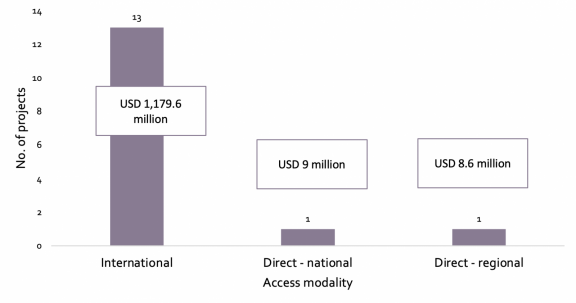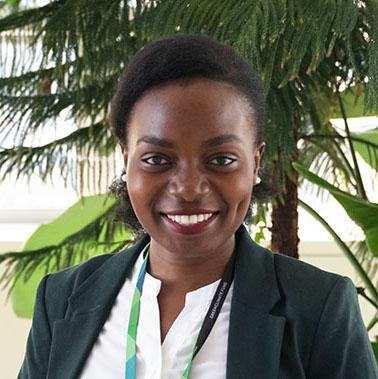Data Outlook: B.28, what would it mean for the GCF’s portfolio?
In 2021, the IEU continues to build and strengthen its internal modularity and capacity to deal with day-to-day operations as well as unexpected events such as the ongoing pandemic through workshops, team retreats and cross-learning opportunities. At our last team retreat in 2020, facilitated by a GCF Secretariat colleague, the IEU collectively identified the following six core team values: integrity, respect and openness, continuous learning, teamwork, excellence and innovation, and accountability.
In the past weeks, we have seen the fruit of this effort, the team culture and continuous learning. The diversity of IEU members and the crossing of disciplines within the IEU present an excellent learning opportunity. The IEU is constantly striving to develop new ways to provide the IEU interns with a space to share their learning on evaluation, climate and the GCF with the rest of the team. After all, learning is a two-way street.
I am pleased to share with you IEU's first Data Outlook blog. This blog presents the results of our most recent learning workshop held just before B.28, prepared and facilitated by the IEU interns. Our IEU Datalab interns asked the question: What would the GCF data look like if all proposed projects were to be approved at B.28 (this, of course, without prejudging any decision by the Board)?
- Andreas Reumann, Head a.i.
Data Outlook: B.28, what would it mean for the GCF’s portfolio?
As interns at the IEU, we have always been curious about the GCF Board meetings. Although the on-going pandemic meant we would not get to experience an in-person Board meeting taking place in Songdo, this did not deter us from exploring the GCF operations and procedures of Board meetings. With keen interest, we sought insights on the projects tabled for the upcoming 28th Board meeting (B.28) with four critical questions in mind:
- What types of projects will be presented for the Board’s consideration at B.28?
- With these projects, will the GCF be reaching new countries that are most vulnerable to climate change? Which region is receiving the biggest amount of GCF finance?
- Which access modalities are being used for projects under consideration at B.28?
- How well is the GCF achieving a balance between mitigation and adaptation in its portfolio?
Overview of the 15 projects for Board’s consideration at B.28
The GCF Secretariat will present 15 projects for consideration by the Board at B.28, the first Board meeting for the year 2021. These projects, which comprise 11 PAP (those processed through the regular Project Approval Process) and 4 SAP (those processed through the Simplified Approval Process) projects, are requesting a total of USD 1,1971.1 million (see Figure I). As per the Board document GCF/B.28/02, the private sector will remain with a meagre contribution in the portfolio, since only one private-sector project will be brought forward for Board’s consideration. This private-sector project is a single country project equating to only 11 per cent of the total finance to be requested.
Figure I. Overview of the 15 projects for Board consideration at B.28
Source: GCF/B.28/02, February 2021. Analysis by IEU DataLab.
Will the GCF be reaching new territories that are most vulnerable to climate change?
If all the 15 projects were approved, the GCF will, for the first time, be expanding its reach to the Republic of Congo, Central African Republic, and Botswana. According to the Global Climate Risk Index, these countries have been listed among those most affected by climate change from the period of 1999-2018 (David, Vera, Laura, & Winges, 2020). In Figure II, we show the distribution of GCF financing across the countries with projects for consideration at B.28. These countries are marked with a light green filling. As illustrated, most countries are located in Africa and the Asia-Pacific. There are only two countries from Latin America and the Caribbean. There is no project being considered at B.28 that would fall under the Eastern Europe and Western Europe and Others region.
The blue circles represent the proportion and size of GCF financing. If approved, the smallest amount of the GCF’s finance will be channelled by a Direct Access Entity (DAE) to Micronesia with USD 8.9 million under the SAP020 project, which is an adaptation project aimed at promoting resilient agriculture. Looking at the finance flows in absolute values for the 15 projects, the Asia-Pacific would be allocated the most funding, 1.5 times more funding than Africa, and 21 times more funding than Latin America and the Caribbean.
Figure II. Distribution of GCF financing across countries with GCF projects for consideration at B.28
Source: GCF/B.28/02, February 2021. Analysis by IEU DataLab.
Which access modalities are being used for projects under consideration at B.28?
Of the 15 projects to be considered at B.28, 87 per cent of the projects were submitted by International Accredited Entities (IAEs), as illustrated in Figure III. Only two projects were submitted by Direct Access Entities (DAEs) – one national and the other regional. No project uses the GCF’s Request for Proposals (RfPs) modality, e.g. the Enhancing Direct Access pilot (EDA) or the Reducing Emissions from Deforestation and Forest Degradation plus (REDD+). In financial terms, project proposals submitted by IAEs would account for USD 1,179.6 million of GCF finance. If the GCF Board were to approve all 15 projects at B.28, the overall GCF portfolio would grow to 173 projects. Overall, the Fund is making efforts to reach new countries but continues to channel its finances mostly through IAEs.
Figure III. Distribution of projects access modality
Source: GCF/B.28/02, February 2021. Analysis by IEU DataLab.
How well is the GCF achieving a balance between mitigation and adaptation in its portfolio?
According to the GCF’s Updated Strategic Plan 2020-2023, the GCF Secretariat aims to work towards a “balanced funding across mitigation and adaptation in line with the Governing Instrument, which aims for a 50:50 balance between mitigation and adaptation over time.” (GCF/B.27/21). However, our data analysis shows that if all the 15 projects (6 adaptation, 4 mitigation and 5 cross-cutting projects) were to be approved at this Board meeting, mitigation will still take a more significant proportion in both nominal and grant equivalent terms. Given this result, the GCF would need to consider investing more in adaptation projects at subsequent Board meetings.
Table 1. Portfolio balance in grant equivalent and nominal terms
| Grant equivalent | Nominal terms | Total number of projects | |
|---|---|---|---|
| Funding amount (A/M) (Portfolio as of 16 Nov 2020) | 50:50 | 36:64 | 158 |
| Funding amount (A/M) (Portfolio after B.28*) | 49:51 | 36:64 | 173 |
Source: GCF/B.28/02, February 2021. Analysis by IEU DataLab. *Projections if all projects for consideration at B.28 are approved.
Without prejudging any of the decisions to be made by the Board at B.28, the IEU interns and the entire IEU team look forward to a successful B.28.
- Hellen Nassuna and Laurene Torterat
References
David, E., Vera, K., Laura, S., & Winges, M. (2020). Global Climate Risk Index 2020. Bonn: Germanwatch e.V.
Green Climate Fund. (2021). GCF/B.28/02: Consideration of funding proposals. Retrieved from Green Climate Fund: Available here.
Green Climate Fund (2020). GCF/B.27/21: Updated Strategic Plan for the Green Climate Fund: 2020 – 2023. Available here.
Disclaimer: The views expressed in blogs are the authors' own and do not necessarily reflect the views of the Independent Evaluation Unit of the Green Climate Fund.


